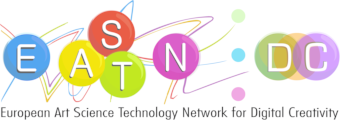If museums do not keep their pace with the modernization of the experiences that they provide with the use of new media and the capabilities that gaming and gamification have to offer, it is probable that their appeal to the public will decrease in the future (Tayara & Yilmaz, 2020; Nofal, Panagiotidou, Reffat, Hameeuw, Boschloos, & Moere, 2020; Madsen, 2020; Bellotti, Berta, De Gloria, D’ursi & Fiore, 2013; Jeon, Ryu & Moon, n.d.).
This work focuses on the idea that we can design and develop gamified museum experiences which can be used as learning or educational tools (Di Raddo, 2020; Chen, 2020; López-Martínez, Carrera & Iglesias, 2020; Greene, Copeland, & Deekens 2020), and extend it to the domain of development of non-authorised experiences. The lack of research that focuses on the “unauthorized” aspect of similar projects is clearly evident by our literature research, thus providing the incentive to research further this particular domain. The “guerilla-based” approach proposed in this work clearly introduces new perspectives for content creators and new aspects for users as it can be used in order to create public interest, particularly amongst younger generations of users who experiment with new technologies and utilise new learning methodologies (Chen, 2020). Furthermore, the transmedia approach introduced within this case study allows content to evolve, offering further enrichment of the story domain and the experiences that can be iteratively introduced by the content experts.
Our paper is structured under the following sections. The introduction presents the research questions, aims and methodology. The main aim here is to identify the key players participating in this process (content expert and experience designer, game designer or media expert, player or student and the content owner). Hence it is important to identify and present their possible involvement in the process and try to categorise their reactions..
The first section is followed by the bibliographical research where the latest papers and research on new museum practices concerning the incorporation of games is presented. However, as the user experience is highly important for the success of this project, we also look into the factors that were identified within the introduction, regarding the key players, and collect various interdisciplinary papers that document their possible reactions.
Next, the development of our case study is addressed, focusing on the scenario and the transmedia experience design, the location analysis, the user requirements, the educational aspects and the use of the appropriate underlying technologies that can support our intended purpose. In terms of the scenario it is based on the fairytale “The old woman who lost her dumpling” by Lefkadio Hearn” that is being re-engineered and it is one of the actual museum exhibits held within the collection that is periodically displayed. The key elements of the story are presented together with the process that adapts them for the intended use within the new gamified process.
The implementation of the case study is presented next separated in sections according to the user-experience design. This is categorised into two sections. The first focuses on the actions taken before the game, displaying the preparatory process of the player outside of the museum, including the guerilla process and introduction. The second focuses on what happens inside the museum, presenting how the gamified process evolves and escalates. The paper concludes at the last section where we summarize our findings and discuss further work that needs to be addressed.
Back
“Reflections: Bridges between Technology and Culture, Physical and Virtual”
is supported by:






